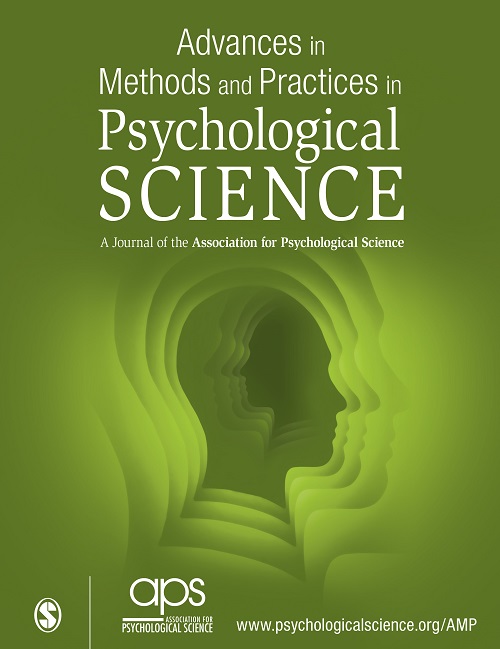这些不是你要找的结果:纵向数据分析中的因果关系和人内/人之间的区别
IF 13.4
1区 心理学
Q1 PSYCHOLOGY
Advances in Methods and Practices in Psychological Science
Pub Date : 2021-10-11
DOI:10.1177/25152459221140842
引用次数: 26
摘要
在心理科学中,研究者经常在纵向数据分析中特别注意人与人之间和人与人之间关系的区别。在这里,我们的目的是澄清人与人之间的区别和因果推理之间的关系,并表明这种区别是信息性的,但在因果推理中并不起决定性作用。我们的主要观点有三点。首先,个人数据对于因果推理是不必要的;例如,人与人之间的实验可以告知(平均)因果效应。第二,个人数据不足以进行因果推理;例如,时变混杂因素可能导致虚假的人际关系。最后,尽管不充分,但个人数据对因果推理非常有帮助。我们提供了一些指针,帮助读者浏览更多关于纵向模型的技术文献,并以呼吁更清晰的概念来结束:而不是让统计模型决定研究人员提出的实质性问题,研究人员应该从定义良好的理论估计开始,这反过来又决定了研究设计和数据分析。本文章由计算机程序翻译,如有差异,请以英文原文为准。
These Are Not the Effects You Are Looking for: Causality and the Within-/Between-Persons Distinction in Longitudinal Data Analysis
In psychological science, researchers often pay particular attention to the distinction between within- and between-persons relationships in longitudinal data analysis. Here, we aim to clarify the relationship between the within- and between-persons distinction and causal inference and show that the distinction is informative but does not play a decisive role in causal inference. Our main points are threefold. First, within-persons data are not necessary for causal inference; for example, between-persons experiments can inform about (average) causal effects. Second, within-persons data are not sufficient for causal inference; for example, time-varying confounders can lead to spurious within-persons associations. Finally, despite not being sufficient, within-persons data can be tremendously helpful for causal inference. We provide pointers to help readers navigate the more technical literature on longitudinal models and conclude with a call for more conceptual clarity: Instead of letting statistical models dictate which substantive questions researchers ask, researchers should start with well-defined theoretical estimands, which in turn determine both study design and data analysis.
求助全文
通过发布文献求助,成功后即可免费获取论文全文。
去求助
来源期刊
CiteScore
21.20
自引率
0.70%
发文量
16
期刊介绍:
In 2021, Advances in Methods and Practices in Psychological Science will undergo a transition to become an open access journal. This journal focuses on publishing innovative developments in research methods, practices, and conduct within the field of psychological science. It embraces a wide range of areas and topics and encourages the integration of methodological and analytical questions.
The aim of AMPPS is to bring the latest methodological advances to researchers from various disciplines, even those who are not methodological experts. Therefore, the journal seeks submissions that are accessible to readers with different research interests and that represent the diverse research trends within the field of psychological science.
The types of content that AMPPS welcomes include articles that communicate advancements in methods, practices, and metascience, as well as empirical scientific best practices. Additionally, tutorials, commentaries, and simulation studies on new techniques and research tools are encouraged. The journal also aims to publish papers that bring advances from specialized subfields to a broader audience. Lastly, AMPPS accepts Registered Replication Reports, which focus on replicating important findings from previously published studies.
Overall, the transition of Advances in Methods and Practices in Psychological Science to an open access journal aims to increase accessibility and promote the dissemination of new developments in research methods and practices within the field of psychological science.

 求助内容:
求助内容: 应助结果提醒方式:
应助结果提醒方式:


